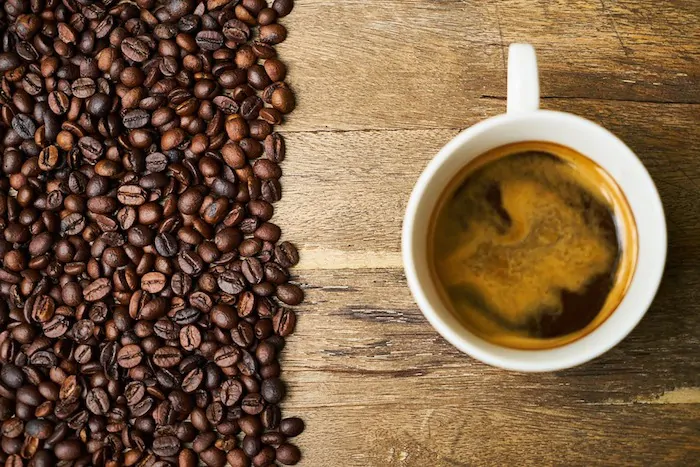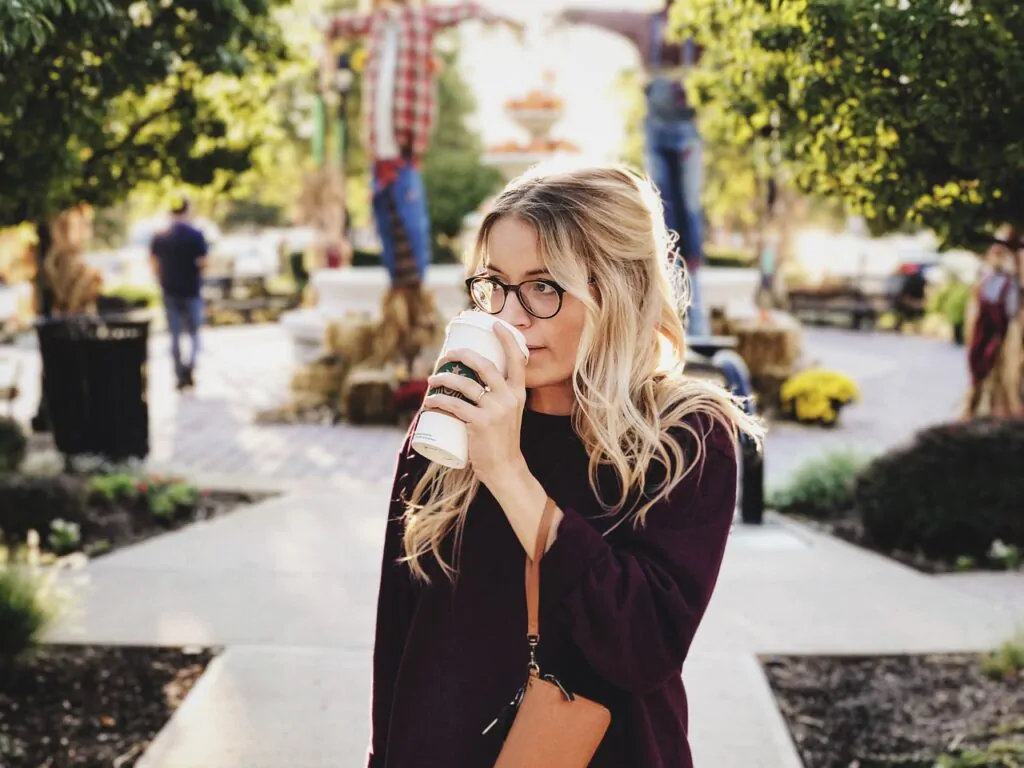Learn how to choose good quality coffee every time with this in-depth guide.

Have you ever heard a coffee lover say, “You just need to try good quality coffee!” and wondered what they meant? Let me explain what they mean, what to look for in good quality coffee, and help you learn to pick the best coffee for you.
It all boils down to the main question: What is good quality coffee? Good coffee will have a strong, pleasant aroma that smells fresh.
The beans should not feel too greasy or dry. Whole beans should not be rock hard or crumble easily between your fingers. The packaging should have a one-way valve and an airtight seal.
There is so much more to picking good quality coffee, but those are the basic first things to look for. Let’s explore this more in-depth so you can become a coffee pro too!
What To Look For In Good Quality Coffee
Finding good coffee will take a little more effort than simply popping down to your local grocery store and snagging the first package you see. It may be easier to just grab a coffee can and head home, but you’re not doing yourself any favors.
It’s certainly possible to find decent coffee this way, but your cup of Joe could be so much better if you just stop and take a moment to follow this guide. Before long, it will become second nature to you and you won’t even have to think—you’ll just know awesome coffee when you encounter it. So, how do you find good quality coffee? Check these major points before you buy.
Coffee Packaging Is Important

It’s not the color of the packaging or the style of the font you need to worry about. Pay attention to the type of packaging and how it functions.
Avoid fancy tins, traditional “coffee” cans, and other rigid containers. As these packages are emptied of beans, more air is left inside, causing the beans to grow stale and unpalatable over time.
Airtight bags are best, as they maintain the proper conditions inside the bag to keep your coffee fresh. The best coffee packages have one-way seals near the top. These allow the coffee to off-gas safely without allowing extra oxygen into the bag itself.
Bags without one-way seals retain too much moisture and gas while sealing in extra oxygen. This is the perfect breeding ground for bacteria which will make your coffee go rancid quickly.
Bags allow consumers to press the excess air out. As you remove beans, reseal the bag, fold it down to remove as much air as possible. Many coffee packages come with resealable zippers and tape to hold the bag closed securely. If yours doesn’t have the sticky tape to help seal it, any tape you have at home will do.
Visual Characteristics Of Whole Beans
Good coffee beans come in two main types. Arabica and Robusta share some similarities, but produce vastly different brews. Some of the best coffee is Arabica, while Robusta beans are usually used for instant coffee.
How the beans look will depend greatly on where they were grown, though the final appearance relies heavily on the roasting method, temperature, and time.
It’s important to note that lighter roast beans will look different than darker roast beans, but the characteristics of good quality coffee remain the same. White coffee is something completely different and we won’t be covering that here. I did talk about white coffee in this article, though.
Look for whole, undamaged beans. They should not be fractured, cracked, or broken into pieces. One or two damaged beans in a bag is not bad. If more than ¼ of the bag is damaged, however, choose a different bag.
Darker roasts will be more bitter in taste. The longer roast time brings more of the oils to the surface, so darker roast beans should be slightly oily in appearance. Lighter roast beans will look slightly drier but they should not be powdery.
I found a pretty good visual guide right here. It’s a good place to start, with excellent pictures to show the differences. It covers whole beans and pre-ground, though I definitely suggest sticking with whole beans so you know what you’re getting.
Take A Sniff Of The Aroma
The smell of your coffee is just as important as its appearance. This will be a great indicator of how the coffee will taste. Over time, you will begin to notice subtle differences right away just by smell. That’s helpful when you want to save money by avoiding terrible coffee before you buy it.
Good quality coffee will have no rancid, sour, or “off” smells. It should not make you wrinkle your nose or turn away. Rancid coffee has been sitting too long and the oils have begun to go off. Avoid this!
If the coffee smells burnt or overly bitter, skip it. It was roasted way too long and the flavor will be more like charcoal than a smooth coffee.
Do your beans smell almost raw? They weren’t roasted long enough. This will make the beans very hard to grind and the taste will be woody or plant-like instead of the classic coffee taste. Don’t get under-roasted beans confused with white coffee! There is a difference.
All that said, a strong aroma is great. It helps you smell the different levels of taste you’ll be experiencing with that first cup. However, if it’s a strong and unpleasant smell, move on to the next bag of beans.
How Does It Taste?

There are many ways to predict the quality of coffee before ever tasting a drop. However, all the investigations in the world can’t make up for bringing some home and trying it out.
The taste profile will be heavily influenced by the roast time and method. Freshness also plays a huge part here. Old, stale coffee will have a flat and weak flavor. Fresh coffee will pop with flavor from the first drop to the last sip.
Depending on your preferred roast, you will want to rate the coffee on bitterness, sweetness, and any extra tones. Lots of great quality coffee comes with flavors added. Be sure to consider those extra flavors when you grade your new coffee purchase. A poor-quality flavor added to a high-quality coffee can ruin your Java!
Always test your new coffee black first. This gives you an accurate impression of the overall flavor and quality. After the first sip, go ahead and add your usual things and taste it again. Your additives should not overpower the flavor of the coffee, but add to it and enhance it.
If the coffee’s natural flavor is easily masked by your additives, the coffee may be old or just not high enough quality. Granted, if you add enough milk and sugar to any coffee, you’ll cover the flavor. If you’re going to do that though, I might have to ask you why you bothered getting awesome coffee to begin with!
The Golden Rule For Choosing Good Quality Coffee
Of all the tips I’ve given you in this article, the most important one is the golden rule for choosing coffee. “Fresh is best.” Many people believe that coffee never goes bad. This is not true. The fact is, coffee comes from a fruit. Do you know of any fruit that lasts forever? Of course not!
On the other hand, some people believe that coffee will go bad after a mere two weeks. This is also false. Properly stored coffee can last much longer. You just need to know what to do and how to handle whole coffee beans.
Makes sense, right? But then how do you know if your coffee is fresh? This is quite simple. Good quality coffee will have a “roasted on” date printed on the package. Do not confuse this for a “use by” date. If you see a package of coffee with a “use by” date and not a “roasted on” date, move along. Knowing when the coffee was roasted is absolutely imperative to making the best cup of coffee.
The reason to avoid a “use by” date is that the manufacturer can put any date on there that they want. It’s not really regulated. That coffee could be 3 days old or 3 years old. Without a “roasted on” date, you will never know.
Related Questions
How Long Can You Store Whole Coffee Beans?
This answer depends on how fresh the coffee was when you bought it. It also depends on how often you open the bag of whole coffee beans.
Your storage method is very important. How you store your coffee also depends on where you live and your specific environmental conditions. Here are some storage tips for the best coffee.
Always use an airtight container. As we discussed above, bags are better than tins or cans, or other rigid containers. Be sure to squeeze out all of the excess air before you store your coffee beans.
If you live in a hot, moist environment, store your beans in the refrigerator or the freezer. Keep your coffee be stored in a dark, cool area. I know people who keep their coffee in their basement.
That only works if the basement is very dry and has a steady, cold temperature. I know many more people who simply keep their whole beans in a sealed container in the freezer.
Stored in this way, your coffee should last for 3 to 4 weeks before you’ll start to notice a difference in the flavor. Some people are able to keep it much longer. You will need to experiment with your coffee storage to figure out your maximum storage time.
See Also:
For more information about how to store coffee beans, you can have a look at my previous article – BEST WAY TO STORE COFFEE BEANS AT HOME
CAN YOU MICROWAVE PAPER COFFEE CUPS?
Can You Use A Paper Towel As A Coffee Filter Substitute?
HOW BIG IS A COFFEE SCOOP?
